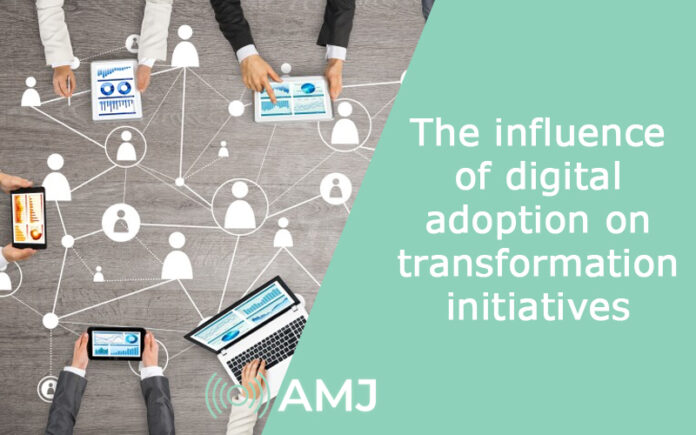In this digital age, a digital adoption strategy must ensure that your organization effectively utilizes digital transformation tools and technology. However, it can be demanding to take on the digital transformation mountain.
Let’s discuss the impact of digital adoption platform software on employees and the business.
Contents
Making change
Change approaches centered on digital transformation go well beyond simply implementing new technologies. People and their human experiences are at the heart of technology disruption. On the one hand, digital transformation concerns customers and their experiences throughout the journey.
On the other hand, transformation is about creating a meaningful employee experience since the quality of service you provide to your clients is directly related to the knowledge you provide.
Change management primarily focuses on a shift in mindset and strategy, but digital adoption necessitates reorganizing internal procedures to facilitate successful disruption.
Digital adoption becomes even more vital for businesses that deal with employee and customer-facing technologies and digital processes to optimize internal efficiency and customer experience.
Upskilling your workforce
Employers who wish to stay competitive in the new digital environment must invest extensively in employee upskilling. Rapid technological advancement, the rise of automation and artificial intelligence, and the changing structure of the labor market have all contributed to the demand for a digitally knowledgeable workforce.
Emerging technologies, including cloud computing, AI, and the Internet of Things (IoT), have upended traditional business paradigms and altered how businesses operate. Companies require employees with digital skills such as data analysis, cybersecurity, and software development to fully utilize current technology.
The benefits of preparing employees for digital adoption
Employee upskilling for digital adoption can substantially impact an organization’s success.
- Innovation – Workers with current knowledge and skills are better equipped to create and propose creative solutions for obstacles. This could result in better products and services, thereby increasing the company’s profitability.
- Productivity – Employees that receive upskilling tend to conduct their tasks more successfully and efficiently. This could result in cost reductions and improved bottom-line results.
- Employee Happiness – Giving employees opportunities to grow and develop can increase job satisfaction and loyalty. This could result in lower turnover and lower hiring costs.
- Customer Experience – A better customer experience is an outcome of digital transformation, which changes how consumers interact with businesses. Businesses may better meet customer expectations and provide a better customer experience by upskilling their employees.
Strong adoption practices
It makes no difference how innovative your new software tool is. Adoption will only occur if your employees care about and understand how it works.
Dealing with internal opposition to change is one of the most typical challenges in digital transformation. Before you even consider purchasing a new software solution, you must prepare your staff.
Employees must understand what digital changes are taking place in the business sector, why they are taking place, and how adopting them will make their tasks easier. Creating a culture of change acceptance through preparation and education will result in an atmosphere of enthusiasm rather than dread.
Let’s break down some best practices for digital adoption.
Consider your change management strategy
As mentioned earlier, a change management component is usually present when a company implements activities to improve business performance or resolve known difficulties. Change management is a methodical technique to cope with changing or transforming a company’s procedures or technologies.
Your goal is to reach a point inside your company where all personnel fully utilize your digital capabilities and assets. As a result, you must approach digital adoption from a change management standpoint.
Provide structured training to employees
Most business-grade applications and digital tools on the market have simple user interfaces and may even include a thorough built-in tutorial. As a result, you may believe that offering practical employee training is a waste of time and money. But that is not the case.
One of the primary causes of digital adoption failure is a need for sufficient training. Even if a few of your employees need help understanding how to use newly introduced technology effectively or are unaware of extra valuable capabilities, this certainly restricts the tool’s efficacy.
To provide a smooth transition to new technology for all employees, you must be willing to spend on systematic training and onboarding. While this can be accomplished through traditional classroom-based learning methods, technology is making on-the-job training more personalized and effective by developing more engaging learning processes that promote a more hands-on approach.
Check-in with your employees
Finally, it is up to your employees to change how they do their tasks. If they fail in their adjustments and cannot adapt to the new working style, your company’s digital adoption will fail, and you will not experience any ROI.
Allow complete engagement and ensure that your staff feels heard. Suppose you agree with everyone on which new tools should be introduced in the business and where training processes should be developed or modified. It will go a long way toward evading future irritation and enhancing employee accountability.
Conclusion
Remember that continual improvement is critical for encouraging digital adoption in organizations. With the correct change management and adoption strategies, digital transformation will flourish in the workplace and the business.











![Index of Money Heist [Season 1, 2, 3 & 4 – All Episodes, Cast and Plot] Index of Money Heist](https://www.asiamediajournal.com/wp-content/uploads/2021/05/Index-of-Money-Heist-3-100x70.jpg)
